
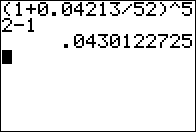

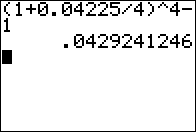
|
BANK A Invest with us! We pay 4.21% compounded daily |
BANK B Invest with us! We pay 4.213% compounded weekly |
BANK C Invest with us! We pay 4.219% compounded monthly |
BANK D Invest with us! We pay 4.225% compounded quarterly |
|
BANK A Invest with us! We pay 4.21% compounded daily 4.29962% APR |
BANK B Invest with us! We pay 4.213% compounded weekly 4.301227% APR |
BANK C Invest with us! We pay 4.219% compounded monthly 4.301547% APR |
BANK D Invest with us! We pay 4.225% compounded quarterly 4.29241% APR |
Figure 01 
|
Computation for Bank A. |
Figure 02 
|
Computation for Bank B. |
Figure 03 
|
Computation for Bank C. |
Figure 04 
|
Computation for Bank D. |

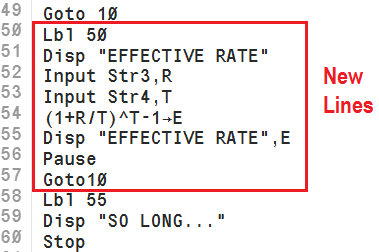
Figure 05 
|
Using the mdified program for the values for Bank A. |
Figure 06 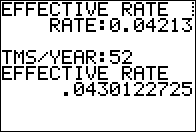
|
Using the mdified program for the values for Bank B. |
Figure 07 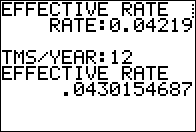
|
Using the mdified program for the values for Bank C. |
Figure 08 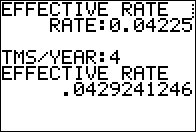
|
Using the mdified program for the values for Bank D. |